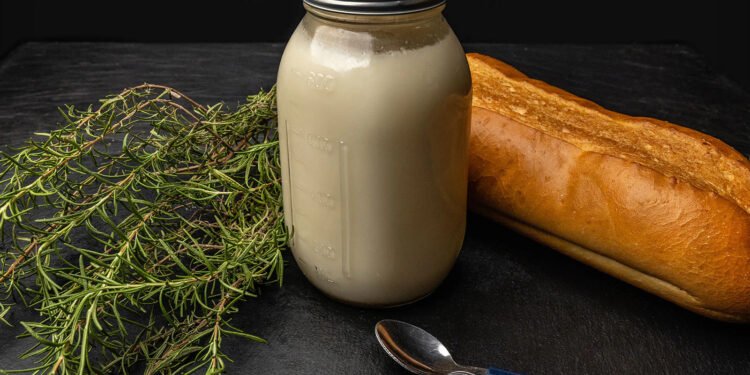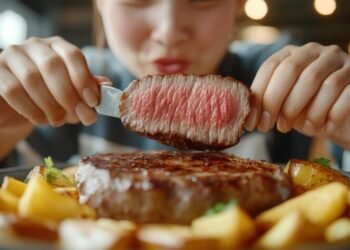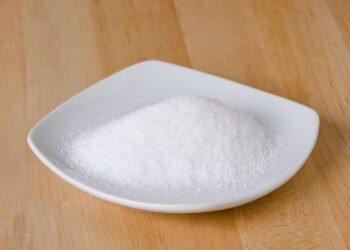For generations, cooks worldwide have relied on animal fats like rendered pork lard to create flavorful and satisfying dishes. However, in recent years, butter has become the go-to fat for many home cooks. While butter has its merits, lard is making a well-deserved comeback thanks to its versatility, health benefits, and unique cooking properties.
This guide explores the differences between rendered pork lard and butter, highlighting why lard might be the better choice for cooking. From enhancing flavors to improving the texture of baked goods, there are plenty of reasons to try lard in your kitchen.
What is Rendered Pork Lard?
Lard is a type of cooking fat derived from pigs. Rendering is the process of slowly melting raw fat to remove impurities, leaving a clean, versatile fat that can be used for various culinary applications. Unlike butter, which contains water and milk solids, lard is nearly pure fat, making it more stable and effective for certain cooking methods.
- Fun Fact: Before vegetable oils became popular, lard was the fat of choice in many households for everything from frying to baking.
Butter vs. Rendered Pork Lard: Key Differences
1. Flavor Profile
- Butter: Its rich, creamy taste makes it ideal for adding flavor to baked goods and spreads.
- Lard: Offers a mild, neutral flavor that doesn’t overpower other ingredients, making it more versatile for savory and sweet dishes.
2. Smoke Point
The smoke point is the temperature at which fat breaks down and burns, affecting the flavor and nutritional value.
- Butter: It has a lower smoke point (around 302°F or 150°C), which limits its use for high-heat cooking like frying.
- Lard: Boasts a higher smoke point (around 374°F or 190°C), making it ideal for frying, roasting, and sautéing.
3. Composition
- Butter: Contains about 80% fat and 20% water and milk solids.
- Lard: It is nearly 100% fat, resulting in better stability and even cooking.
Top Reasons to Switch to Rendered Pork Lard
1. Health Benefits
Lard is often misunderstood as an unhealthy fat, but it offers several health advantages when consumed in moderation.
- Rich in Monounsaturated Fats: About 48% of lard’s fat content is monounsaturated fats, the same heart-healthy fats found in olive oil.
- No Trans Fats: Unlike some processed vegetable oils, lard is naturally free from trans fats.
- Vitamin D Source: Lard from pasture-raised pigs is one of the best natural sources of vitamin D, which supports bone health and immunity.
2. Versatility in Cooking
One of the biggest advantages of lard is its versatility. Its neutral flavor and high smoke point suit various cooking methods.
- Frying: Perfect for frying chicken, donuts, or potatoes, thanks to its ability to produce crispy, golden results.
- Baking: It is ideal for pie crusts, biscuits, and pastries, as it creates a flaky texture that’s hard to achieve with butter.
- Roasting: Enhances the natural flavors of vegetables and meats when roasting.
3. Superior Texture for Baked Goods
The secret is likely lard if you’ve ever wondered why grandma’s pie crusts were so flaky and tender. Unlike butter, which contains water that can create steam pockets, lard is pure fat. This allows it to coat the flour particles more effectively, producing a tender crust.
- Pro Tip: Substitute lard for butter in your favorite pie crust recipe, and you’ll notice the difference immediately.
4. High-Heat Cooking
Lard’s high smoke point makes it a superior choice for high-heat cooking methods like frying and roasting. It won’t burn as quickly as butter, ensuring your food cooks evenly without developing a bitter taste.
- Example: Use lard to fry chicken or fish for a perfectly crispy exterior and moist interior.
How to Use Rendered Pork Lard in Your Kitchen
Switching to lard is easy once you understand its properties and uses. Here are some tips for incorporating it into your cooking:
1. Frying
Lard’s high smoke point makes it ideal for frying. Whether you’re preparing French fries, doughnuts, or fried chicken, lard ensures an even, crispy finish.
2. Baking
In pie crusts, biscuits, and cookie recipes, replace butter with lard. The result is a lighter texture and richer flavor.
- Recipe Idea: Use lard in a traditional apple pie crust for a flaky, melt-in-your-mouth experience.
3. Roasting
Coat vegetables or meats in lard before roasting to achieve a caramelized exterior and enhance natural flavors.
4. Sautéing
Use lard to sauté onions, garlic, or other vegetables for soups and stews. It adds a subtle depth of flavor without overpowering the dish.
Health Comparisons: Butter vs. Rendered Pork Lard
| Nutrient | Butter | Rendered Pork Lard |
| Monounsaturated Fats | ~26% | ~48% |
| Saturated Fats | ~51% | ~41% |
| Trans Fats | Trace (natural) | None |
| Vitamin D | Minimal | High (if pastured) |
Sustainability and Tradition
Using lard supports sustainable cooking practices by utilizing animal parts that might otherwise go to waste. This makes it an eco-friendly choice for those looking to reduce waste in the kitchen. Additionally, cooking with lard connects us to culinary traditions passed down through generations.
Why Choose Rendered Pork Lard from Red Field Ranch?
At Red Field Ranch, we take pride in offering premium-quality rendered pork lard sourced from heritage breeds. Our lard is carefully rendered to ensure purity and exceptional flavor, making it a versatile addition to your kitchen. Whether you’re a professional chef or a home cook, our lard guarantees superior results every time.
- High Quality: Made from heritage-breed pigs raised with care.
- Versatile: Perfect for frying, baking, roasting, and more.
- Sustainable: Supports eco-friendly cooking practices.
Conclusion
While butter has its place in the kitchen, rendered pork lard is a versatile, flavorful, and healthier alternative that deserves more attention. From frying and baking to roasting and sautéing, lard offers unmatched benefits that elevate your cooking. If you’re ready to try something new and experience the difference, now is the perfect time to make the switch.
Ready to elevate your cooking? Visit Red Field Ranch today to purchase high-quality rendered pork lard and bring traditional flavor back to your kitchen!






